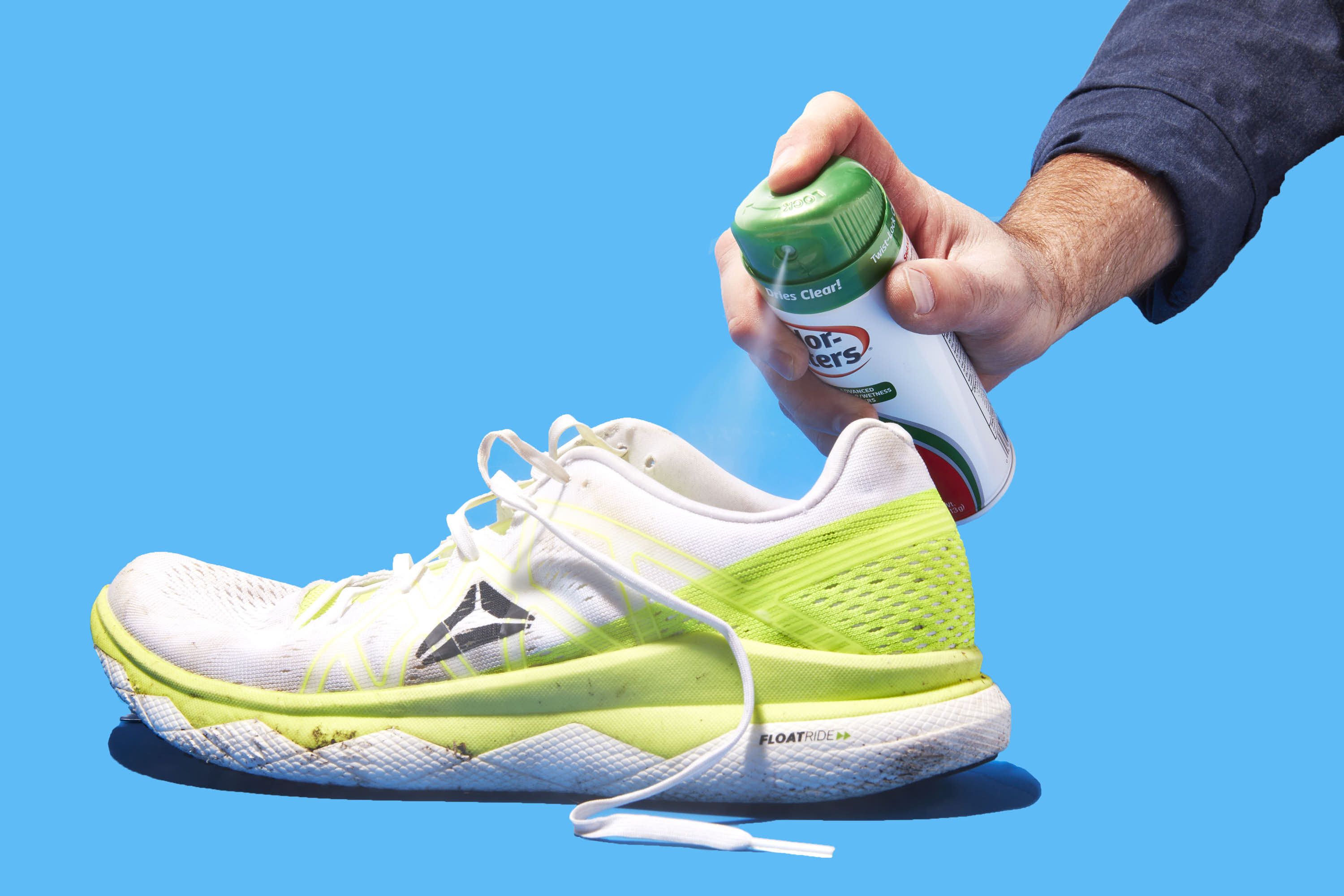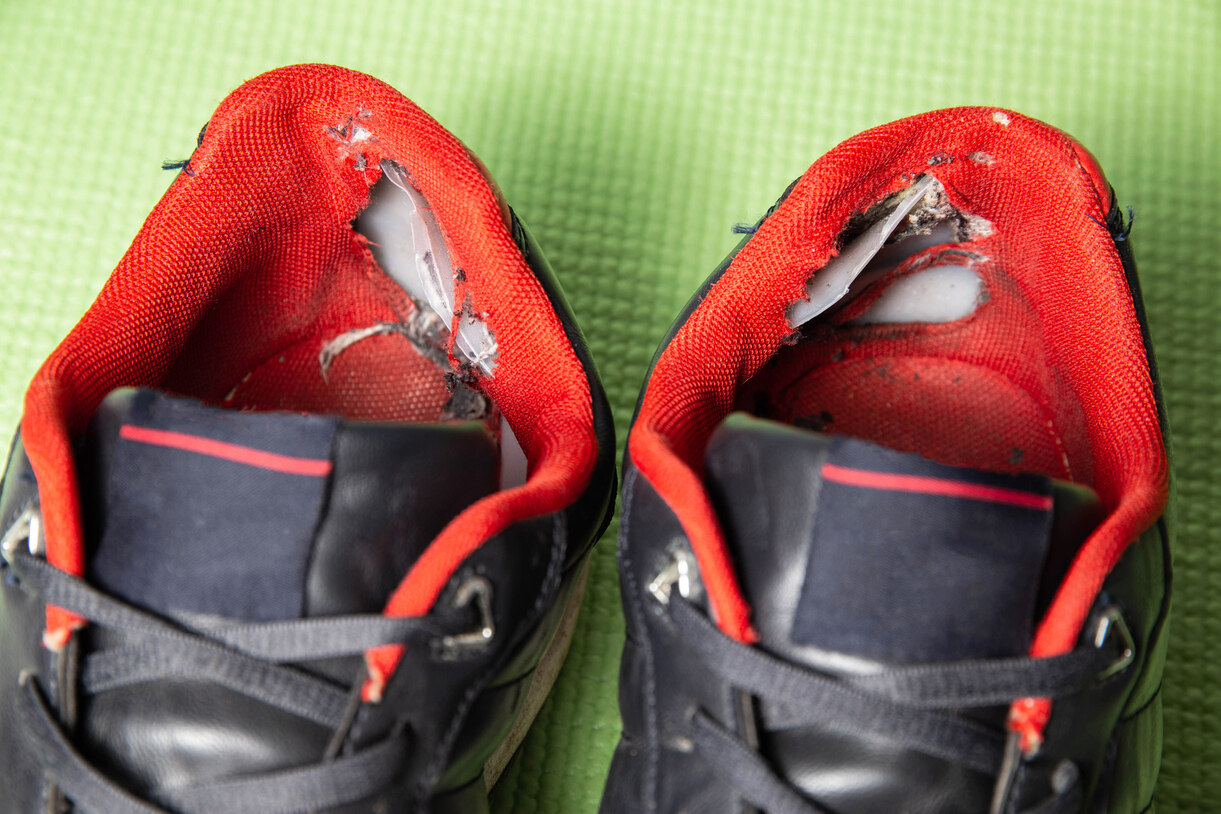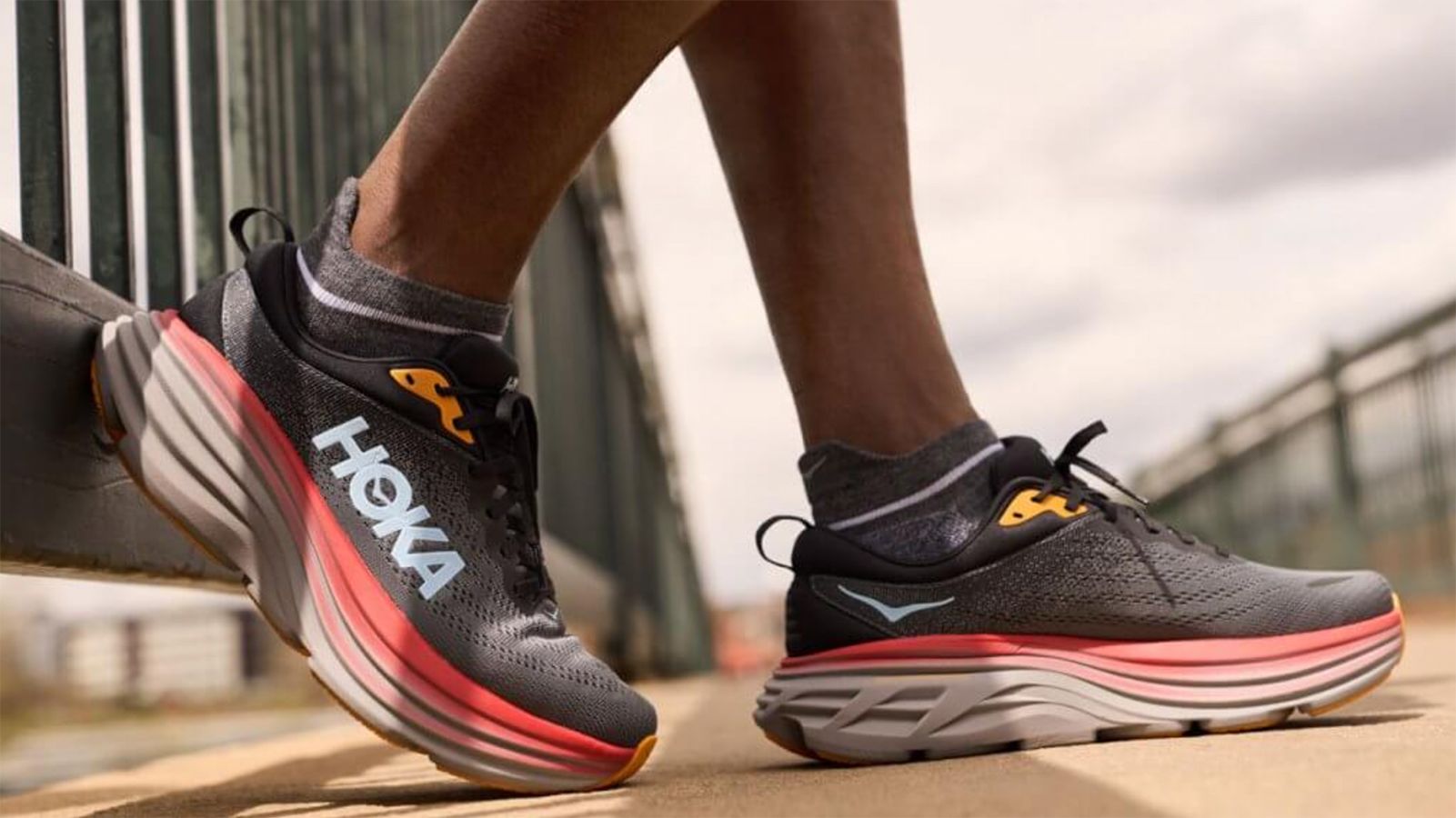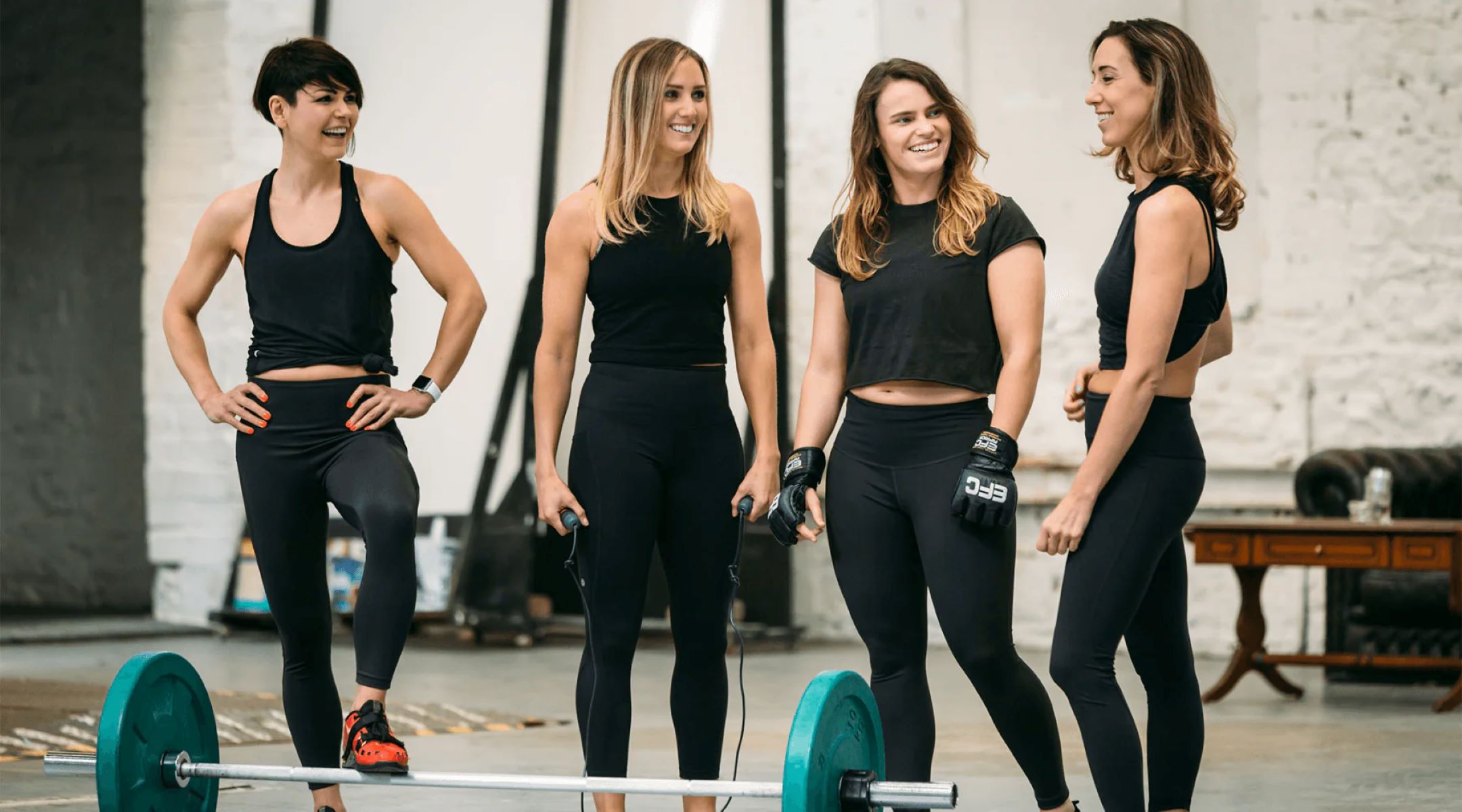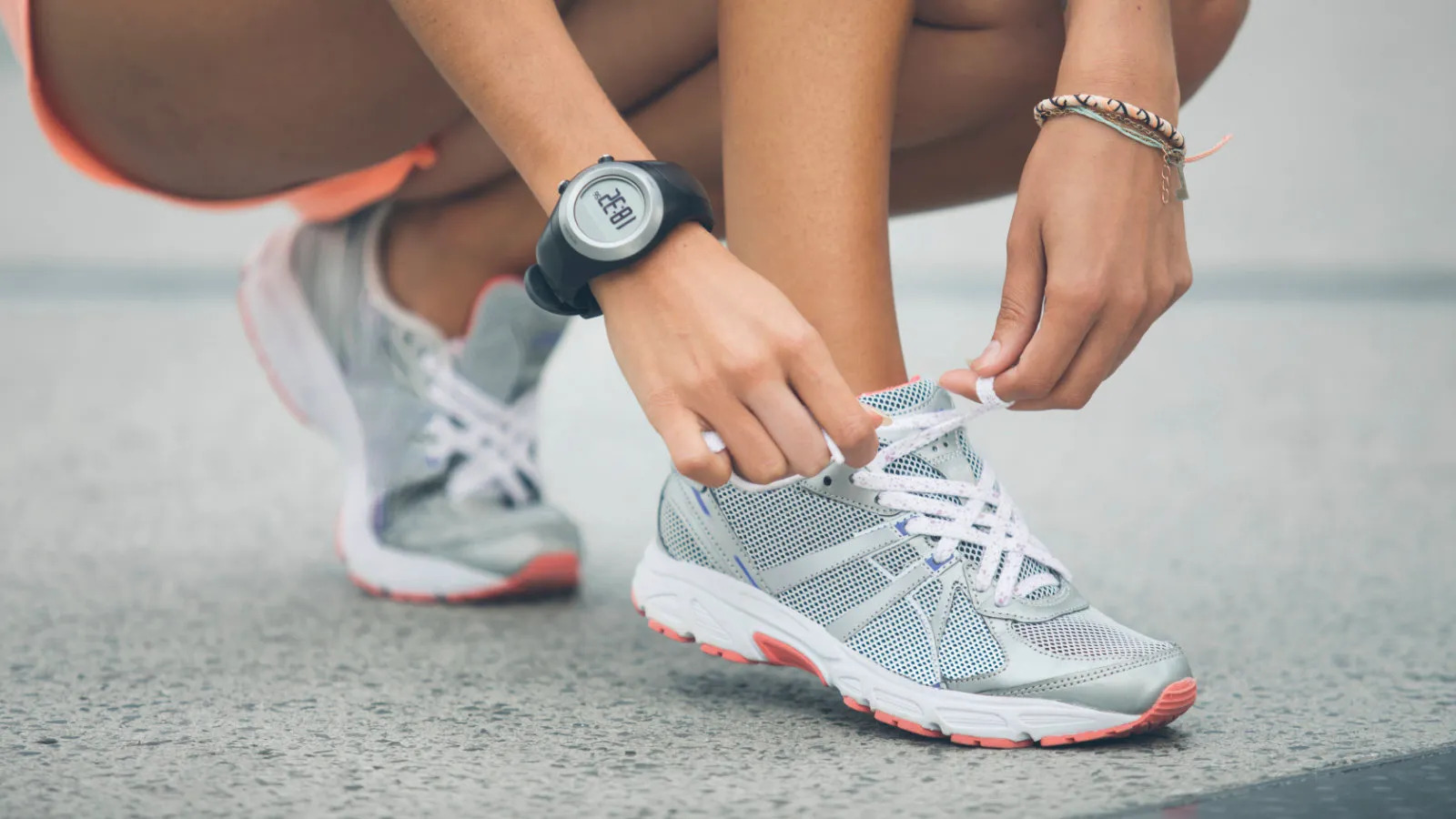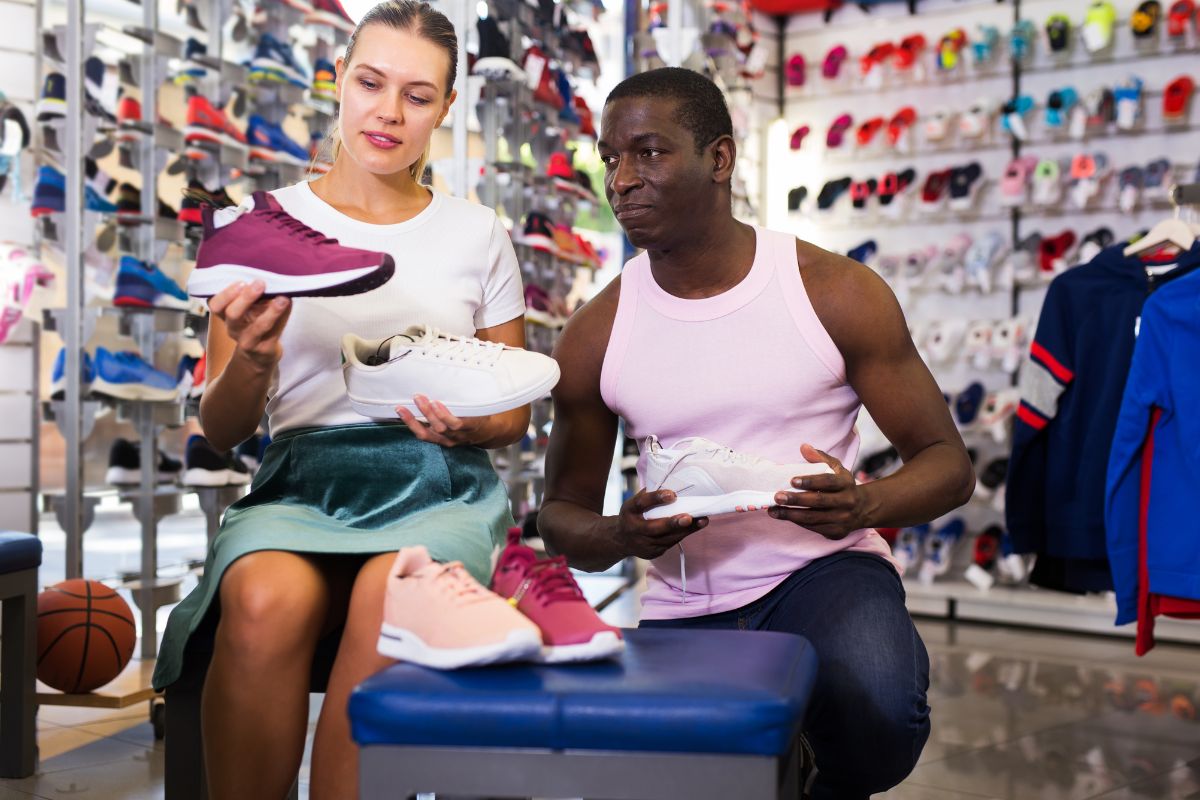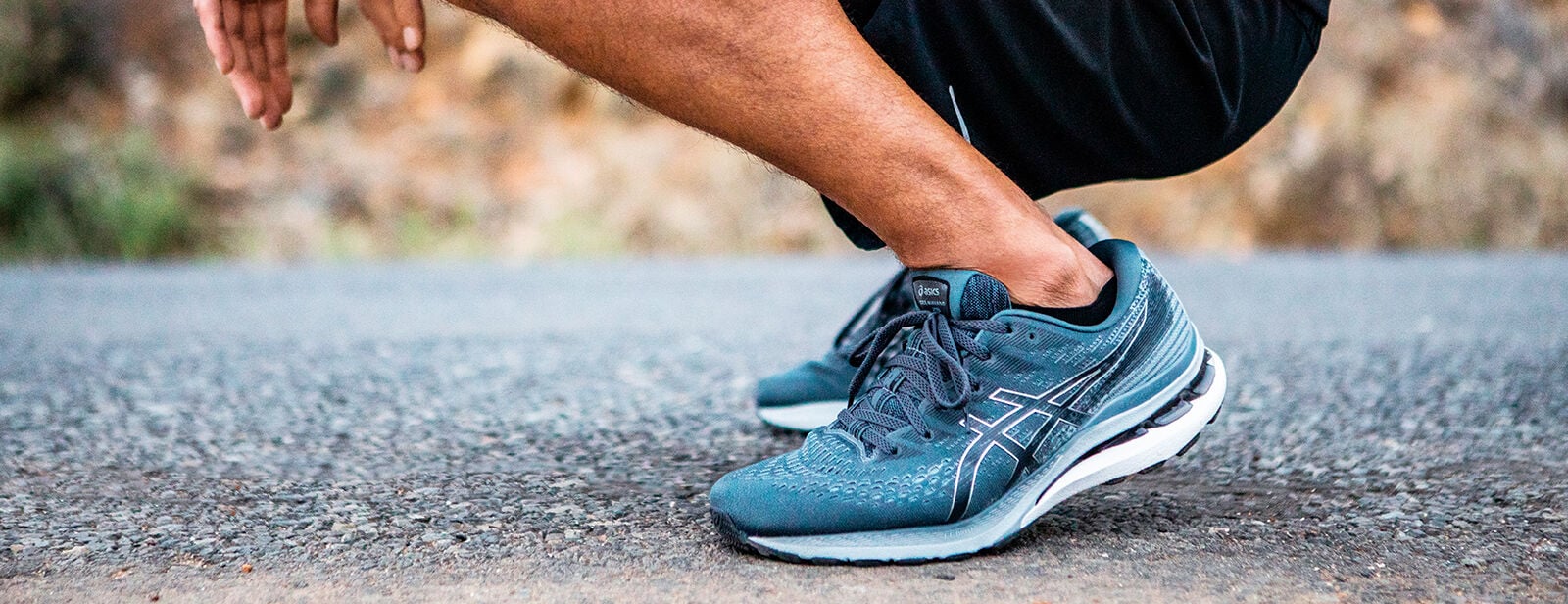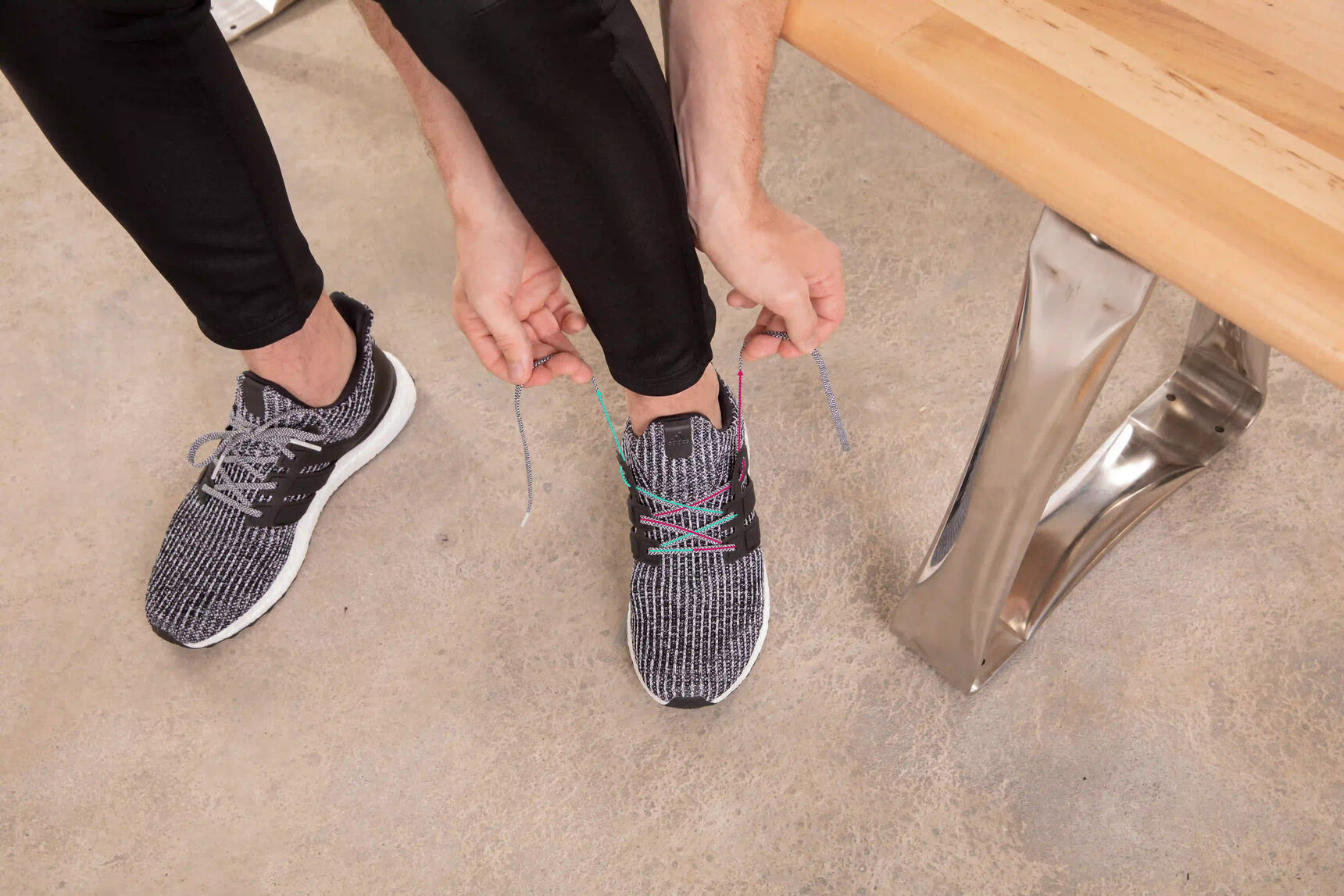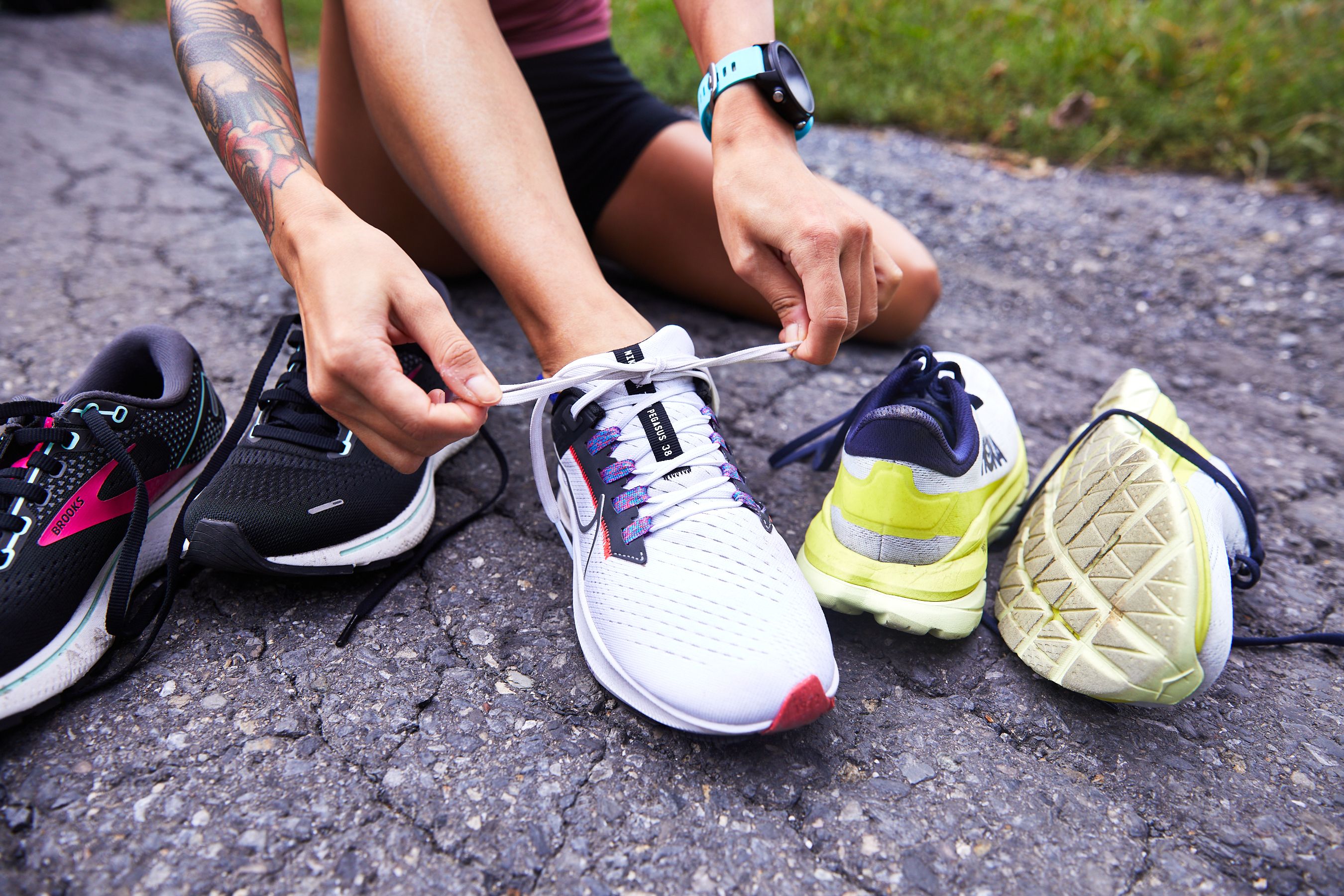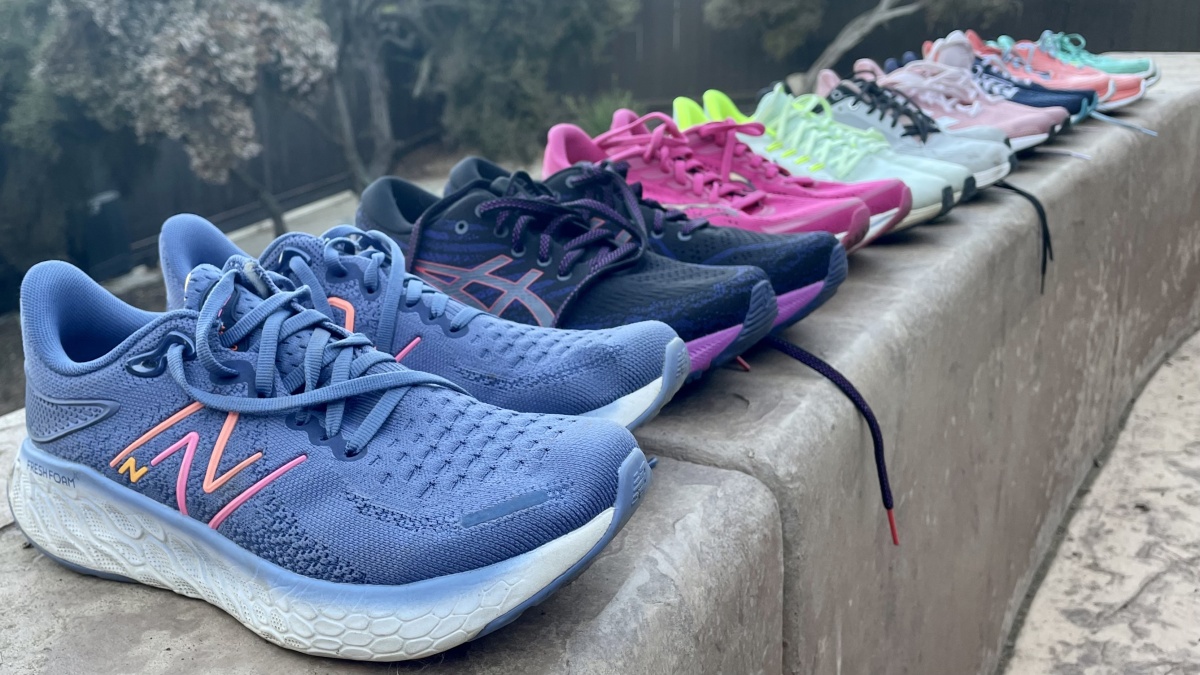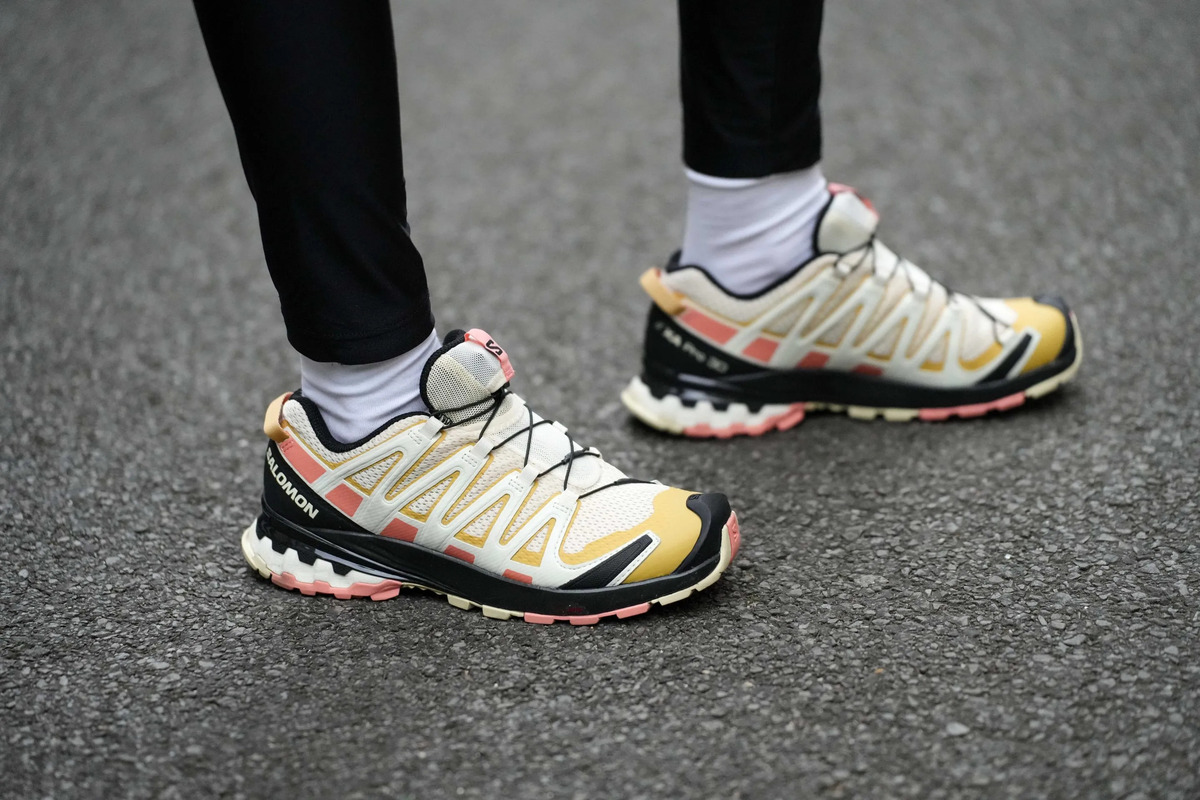

Featured
Why Are Running Shoes So Ugly
Published: August 12, 2023
Discover featured running shoes and explore why they have become so famously unattractive. Uncover the secrets behind their design and functionality.
Introduction
When it comes to running shoes, many would argue that they are not the most visually appealing footwear. With their chunky soles, bold color combinations, and unconventional designs, running shoes often prioritize functionality over aesthetic appeal. But have you ever wondered why running shoes tend to be so “ugly”?
It is important to note that the concept of ugliness is subjective and what one person finds unappealing, another may find unique or attractive. However, in the context of running shoes, the term “ugly” is often used to describe their unconventional and sometimes clunky appearance compared to other types of footwear.
One reason for the seemingly less aesthetically pleasing design of running shoes is their focus on functionality. Running shoes are specifically engineered to provide optimal support, cushioning, stability, and traction. These features are essential in helping runners perform at their best, reducing the risk of injury, and enhancing overall comfort.
Unlike other types of shoes, such as high heels or dress shoes, running shoes go through rigorous testing and development to ensure they meet the specific needs of runners. These needs include shock absorption, flexibility, breathability, and durability. Every component of a running shoe—from the midsole and outsole to the upper and laces—is meticulously designed and chosen for its performance-enhancing properties.
While the emphasis on functionality is crucial, it often takes precedence over aesthetic appeal in running shoes. This means that the focus is placed on the shoe’s performance benefits rather than its visual attractiveness. And it makes sense – when you’re out for a run, it’s the shoe’s ability to provide comfort and support that matters most, not how it looks.
Additionally, the design of running shoes is influenced by various factors, including biomechanics, material technology, and industry trends. These factors can contribute to the unconventional and sometimes polarizing appearances of running shoes.
In the next sections, we will explore these factors in more detail and delve into why running shoes are the way they are. We will also discuss the role of fashion and branding in shoe design, as well as the evolving preferences of consumers. So, let’s lace up our running shoes and dive deeper into the world of running shoe aesthetics.
Functional Design vs. Aesthetic Appeal
When it comes to running shoes, the primary focus is on their functional design rather than their aesthetic appeal. As mentioned earlier, running shoes are engineered to provide optimal comfort and performance for runners, which means that the emphasis is placed on features such as support, cushioning, and stability.
One of the key reasons for the functional design of running shoes is the biomechanics of running. The repetitive impact forces and motions involved in running can put a strain on the body, particularly on the legs and feet. Running shoes are designed to mitigate these impacts by providing cushioning and shock absorption properties in the midsole. This helps to reduce the risk of injuries such as stress fractures and sprains.
In addition to cushioning, running shoes also offer stability features. These features are crucial in preventing excessive foot movement and ensuring proper alignment during running. They are typically achieved through elements such as supportive arch structures, heel counters, and midsole materials that provide stability without sacrificing flexibility.
Another important aspect of running shoe design is traction. Running involves a variety of surfaces, including roads, trails, and tracks, and each surface requires specific traction properties to prevent slips and falls. Therefore, the outsole of running shoes often features a specialized tread pattern and durable rubber compounds to provide necessary grip and durability.
While functional design is essential in running shoes, it is not to say that aesthetic appeal is completely disregarded. Nowadays, some running shoe brands are finding ways to strike a balance between functionality and style. With advancements in technology and design, more attention is being given to the visual aspect of running shoes without compromising their performance.
Brands have started to incorporate more attractive color combinations and visually appealing patterns into their running shoe designs. They understand that runners not only value performance but also want to express their individuality and personal style through their footwear. By offering a range of visually appealing options, brands are able to cater to the diverse preferences of consumers.
However, it’s worth noting that even when aesthetics are taken into consideration, the functional aspects of running shoes remain paramount. While a visually pleasing design may catch the eye, it is the performance-enhancing features that ultimately make a difference in a runner’s experience.
Next, we will explore the various factors that influence the design of running shoes, including technological advancements, industry trends, and the role of fashion and branding.
Importance of Performance in Running Shoes
When it comes to running shoes, performance is of utmost importance. Runners rely on their shoes to provide the necessary support, cushioning, and stability to enhance their performance and reduce the risk of injury. While aesthetics may be subjective, the performance aspect of running shoes is objective and can make a noticeable difference in a runner’s experience.
Performance in running shoes is crucial for several reasons. Firstly, adequate support and cushioning are essential to absorb the impact forces generated during running. With each stride, the feet absorb several times the runner’s body weight, putting significant stress on the muscles, joints, and bones. A well-designed running shoe with proper cushioning can help to distribute and reduce these forces, providing a more comfortable and healthier running experience.
Additionally, running shoes play a significant role in improving running efficiency. The design of the shoe, particularly the midsole, can influence the runner’s stride, gait cycle, and overall energy return. Features such as responsive foam materials or propulsion plates can enhance the runner’s forward momentum, resulting in more efficient running mechanics and potentially improved performance.
Furthermore, stability is crucial for runners, especially those with pronation or supination tendencies. Pronation refers to the natural inward rolling motion of the foot during the gait cycle, while supination refers to the outward rolling motion. Running shoes with stability features, such as medial posts or support structures, can help to correct or accommodate these pronation patterns, promoting proper alignment and reducing the risk of overuse injuries.
Another important aspect of performance in running shoes is their weight. Lighter shoes can contribute to a more responsive and nimble experience, allowing runners to conserve energy and maintain a faster pace. However, it is important to strike a balance between weight and cushioning, as too lightweight shoes may compromise the necessary protection and support.
It’s crucial to note that while performance should be a primary consideration in running shoe design, it doesn’t mean that all runners require the same type of shoe. Every individual has different biomechanics, foot shape, and running style, which means that the ideal running shoe will vary from person to person.
This is why it’s important for runners to undergo gait analysis and receive guidance from professionals or experienced staff at specialty running stores. They can help determine the runner’s specific needs and recommend the most appropriate shoe based on factors such as arch type, pronation, and intended use.
Next, we will explore the various factors that influence the design of running shoes, including material technology, industry trends, and the evolving preferences of consumers.
Factors Influencing Shoe Design
When it comes to the design of running shoes, there are several important factors that influence their overall look and functionality. These factors include technological advancements, material innovations, biomechanical research, and evolving fashion trends.
Technological advancements play a significant role in shaping the design of running shoes. As new technologies emerge, shoe manufacturers are able to incorporate them into their products, improving comfort, performance, and durability. For instance, the development of lightweight foam materials with high energy return has revolutionized the cushioning systems in running shoes. Brands have also utilized advanced manufacturing techniques to create more precise and customized shoe designs, enhancing the overall fit and performance of the footwear.
Material innovations are another crucial factor in running shoe design. Over the years, there have been significant advancements in materials used for the uppers, midsoles, and outsoles of running shoes. These advancements have led to improved breathability, moisture-wicking capabilities, flexibility, and responsiveness. Additionally, materials with enhanced durability and resistance to wear and tear have been developed, allowing running shoes to withstand the rigors of intense training and long-distance running.
Biomechanical research plays a fundamental role in understanding how the human body moves and functions during running. Shoe manufacturers incorporate the findings of these studies into their designs, aiming to optimize the shoe’s performance and provide the necessary support and stability for runners. The insights gained from biomechanical research help inform decisions on factors such as midsole cushioning, arch support, and traction patterns on the outsole.
Fashion trends also have an impact on running shoe design, although their influence tends to be more subjective. As with any other type of fashion, running shoes are not exempt from the influence of aesthetics and style. Consumer preferences and market demands play a significant role in shaping the visual aspects of running shoes, such as color palettes, patterns, and branding. Brands strive to create visually appealing designs that align with current fashion trends while still maintaining the necessary performance features.
It is worth mentioning that the influence of these factors on shoe design is constantly evolving. New technologies, materials, and research continue to push the boundaries of what is possible in running shoe design. Additionally, changing consumer preferences and industry trends contribute to the ongoing evolution of running shoe aesthetics and functionalities.
In the next sections, we will explore the impact of industry trends and the role of fashion and branding in running shoe design. We will also discuss how manufacturers aim to strike a balance between functionality and style to cater to the diverse preferences of consumers.
Impact of Industry Trends on Shoe Aesthetics
In the world of running shoes, industry trends play a significant role in shaping the aesthetics of the footwear. These trends are influenced by a variety of factors, including consumer preferences, cultural shifts, and advancements in design technology. As a result, running shoe designs undergo constant evolution to keep up with the ever-changing market demands.
One prominent trend in recent years has been the rise of minimalist and barefoot running. This trend emphasized the natural movement of the foot and advocated for shoes with lightweight and flexible designs. As a result, running shoe designs began to incorporate thinner soles, minimal padding, and more minimalist aesthetics. However, it’s important to note that the minimalist trend has since evolved into a more balanced approach, with an increased emphasis on cushioning and support.
Another trend that has influenced shoe aesthetics is the growing popularity of athleisure wear. Athleisure is a fashion trend that blends athletic apparel with everyday clothing, resulting in a more casual and comfortable style. Running shoes have become an essential part of the athleisure look, and as a result, shoe designs have moved towards more versatile and fashionable designs that can be worn both during workouts and casual outings.
Color trends also have a significant impact on running shoe aesthetics. From vibrant neon hues to earthy tones and pastel shades, the color palette of running shoes is constantly evolving to reflect current fashion trends. These colors can make a statement or create a cohesive look when paired with other athletic attire.
Additionally, collaborations between athletic shoe brands and fashion designers or celebrities have played a crucial role in shaping shoe aesthetics. These partnerships bring fresh perspectives, unique design elements, and creative storytelling to running shoe designs. Collaborations have resulted in limited edition collections that often sell out quickly, showcasing the influence of fashion and popular culture on running shoe aesthetics.
Advancements in design technology have also allowed for more innovative and visually striking shoe designs. From 3D printing to mixed-material uppers and experimental outsole patterns, running shoes are now able to push the boundaries of creativity while still maintaining the necessary performance features.
It is worth noting that while industry trends do influence running shoe aesthetics, the functional aspects of the shoe should never be compromised. Performance, comfort, and safety remain essential considerations in the design process. Running shoe brands strive to find the perfect balance between meeting the demands of trends and ensuring that their products meet the needs of runners.
In the next section, we will explore the role of fashion and branding in running shoe design, as well as the challenges and considerations that come with striking the right balance between functionality and style.
Role of Fashion and Branding
In the world of running shoes, fashion and branding play a significant role in shaping the design and appeal of the footwear. Running shoe brands understand that consumers not only value performance and functionality but also want to make a fashion statement with their footwear.
Brands invest heavily in creating visually appealing running shoe designs that align with current fashion trends. This includes incorporating attractive color combinations, unique patterns, and sleek silhouettes into their footwear. These design elements enhance the overall aesthetics of the shoes and make them more appealing to a broader range of consumers.
Additionally, branding plays a crucial role in the perception of running shoes. Brands have distinct logos, slogans, and marketing strategies that help to differentiate them from their competitors and create a sense of brand identity. The branding of a running shoe can evoke feelings of trust, quality, and style, which can influence consumers’ purchasing decisions.
The role of fashion and branding is not limited to the external appearance of running shoes. It extends to the overall customer experience, including packaging, advertisements, and retail store displays. Running shoe brands strive to create a cohesive and visually compelling brand experience that reflects their values and resonates with their target audience.
Celebrity endorsements and collaborations between running shoe brands and athletes or popular influencers also contribute to the fashion and branding aspect of running shoes. These endorsements help to create a buzz around the footwear and further enhance their desirability among consumers. Whether it’s an athlete sporting a particular brand during a race or a celebrity endorsing a shoe in a marketing campaign, the influence of these partnerships on the perception of running shoe aesthetics cannot be underestimated.
However, it is important to strike a balance between fashion and branding and the functional aspects of running shoes. While aesthetics and branding can attract consumers initially, the long-term success of running shoes relies on delivering the expected performance benefits. Running shoe brands must ensure that their footwear meets the necessary standards of comfort, support, and durability expected by runners.
Striking the right balance between fashion and branding while maintaining functionality can be a challenge. Brands must carefully consider consumer demands, market trends, and technological advancements in their design and development processes. By doing so, they can create running shoes that not only look good but also perform exceptionally.
In the concluding section, we will summarize the key points discussed throughout the article and highlight the importance of balancing functionality and aesthetics in running shoe design.
Balancing Functionality with Style
When it comes to the design of running shoes, finding the delicate balance between functionality and style is crucial. While functional aspects like support, cushioning, and stability are paramount, aesthetics play a significant role in attracting and satisfying consumers. Running shoe brands strive to create footwear that not only performs well but also looks appealing and aligns with current fashion trends.
One strategy for balancing functionality with style is to incorporate innovative design technologies and materials. Brands invest in research and development to create advanced cushioning systems, lightweight materials, and responsive components that enhance both performance and aesthetics. By utilizing these technologies, they can create visually appealing running shoes without compromising on essential factors like comfort and support.
Another approach is to collaborate with fashion designers or athletes who have a keen understanding of both style and performance. These collaborations bring fresh perspectives, unique design elements, and creative storytelling, resulting in running shoes that stand out both in terms of functionality and aesthetics.
However, it is essential to carefully consider consumer feedback and preferences when striking the balance between functionality and style. Brands conduct market research and engage with their target audience to understand their needs, desires, and fashion preferences. This information helps shape the design process, ensuring that the running shoes meet the expectations of the intended consumers while still being visually appealing.
At the end of the day, it is important to remember that aesthetics alone cannot make a running shoe successful. The functional aspects of the shoe, such as support, cushioning, and stability, must remain top priorities. Brands need to constantly innovate and adapt their designs to reflect the evolving needs of athletes and consumers.
Additionally, brands need to consider the diverse range of runners and their specific requirements. Factors like foot shape, arch type, and running style vary from person to person. Therefore, offering a variety of styles and fits is crucial to meeting the individual needs of runners while still providing a visually appealing product.
By striking the right balance between functionality and style, running shoe brands can create footwear that not only performs exceptionally but also satisfies the aesthetic preferences of consumers. This balance ensures that runners can pursue their goals with confidence, knowing that their shoes provide the necessary support, comfort, and performance, while also reflecting their personal style and fashion preferences.
In the concluding section, we will summarize the key takeaway points from the article and reflect on the future direction of running shoe aesthetics and design.
Consumer Preferences and Expectations
Consumer preferences and expectations play a significant role in shaping the design of running shoes. As the market for athletic footwear continues to evolve, runners have become more discerning in their choices and have specific preferences and expectations when it comes to the aesthetics and functionality of their running shoes.
One key aspect of consumer preferences is individuality. Runners want running shoes that reflect their personal style and allow them to stand out from the crowd. This has led to an increase in demand for shoes with vibrant colors, unique patterns, and customizability options. Brands have responded by offering a wide range of colorways and design variations to cater to the diverse preferences of consumers.
Another important consideration for consumers is durability. Runners expect their shoes to withstand the rigors of regular training and long-distance running. They look for materials and construction techniques that offer high durability, ensuring that their investment in a pair of running shoes will last them for a reasonable period of time. This expectation often extends to the visual appeal of the shoes, as consumers appreciate designs that remain intact and vibrant even after extended use.
Comfort is a critical factor for consumers when it comes to running shoes. Runners want shoes that fit well, provide adequate cushioning, and allow for breathability. Brands have responded by using advanced padding materials, breathable mesh uppers, and ergonomic design elements to ensure that their shoes offer the highest level of comfort possible without compromising on performance.
Sustainability is also becoming an increasingly important factor in consumer preferences. Runners are increasingly conscious of the environmental impact of their choices and seek out shoes made from sustainable materials or manufactured with eco-friendly processes. They appreciate brands that prioritize sustainability and incorporate responsible practices in the production of their footwear.
Furthermore, consumers expect running shoes to keep up with the latest technological advancements. They look for features such as responsive cushioning, enhanced energy return, lightweight materials, and adaptive designs. Brands strive to stay at the forefront of innovation, investing in research and development to meet these demands and provide cutting-edge solutions that improve the overall running experience.
Brands must stay attuned to these consumer preferences and expectations. By understanding the evolving needs and desires of runners, brands can continue to create running shoes that satisfy their customers while pushing the boundaries of design and performance.
In the concluding section, we will summarize the key points discussed throughout the article and discuss the potential future innovations and changes in running shoe aesthetics.
Athlete Endorsements and Influences on Shoe Design
Athlete endorsements have a significant impact on running shoe design. Professional athletes serve as influential figures in the world of sports, and their preferences and performance can greatly influence the design and marketing of running shoes. Brands often collaborate with athletes to create signature shoe lines or incorporate their feedback and insights into the development process.
Athletes provide valuable input to running shoe brands based on their experience and expertise. They understand the demands of their sport and have specific needs when it comes to footwear. By collaborating with athletes, brands can gain insights into the specific performance requirements of athletes and fine-tune their designs accordingly.
Athlete endorsements not only influence the technical aspects of running shoe design but also impact the visual aesthetics. Athletes often have input into the design, colorways, and graphics of their signature shoes, reflecting their personal style and preferences. This collaboration helps create a unique connection between the athletes and the consumers, as fans and followers of these athletes aspire to wear the same shoes they do, believing that the footwear will provide them with similar performance benefits.
Athlete endorsements also contribute to the marketing and branding of running shoes. Brands leverage the popularity and influence of athletes to promote their products through advertisements, social media campaigns, and sporting events. Seeing their favorite athletes wearing a particular brand’s shoes creates a sense of trust and credibility among consumers, influencing their purchasing decisions.
One example of the influence of athletes on running shoe design is the Nike Vaporfly series. This line of shoes, which has been widely acclaimed for its game-changing performance benefits, was developed in collaboration with elite marathon runners. Feedback and insights from these athletes helped shape the design of the shoe, resulting in a footwear model that provides exceptional energy return and speed.
Additionally, athlete performances and achievements on the global stage have a direct impact on consumer trends and preferences. When an athlete breaks records or achieves remarkable feats while wearing a particular brand’s shoe, it generates buzz and increases consumer interest in that brand. This, in turn, influences the design and marketing strategies of running shoe brands, as they seek to capitalize on the success and popularity of these athletes.
Athlete endorsements and influences on running shoe design highlight the symbiotic relationship between athletes and brands. Athletes rely on innovative and high-performance footwear to enhance their performance, while brands gain exposure, credibility, and valuable insights from working with top athletes.
In the concluding section, we will summarize the key points discussed throughout the article and reflect on the potential future innovations and changes in running shoe aesthetics.
Future Innovations and Potential Changes in Shoe Aesthetics
The world of running shoe design is constantly evolving, with new innovations and advancements reshaping both functionality and aesthetics. As technology continues to progress and consumer preferences shift, we can expect significant changes in the aesthetics of running shoes in the future.
One area of innovation that holds promise for the future is materials. Brands are continually experimenting with new materials that offer enhanced durability, breathability, and sustainability. We can expect to see more eco-friendly options, such as recycled or bio-based materials, becoming increasingly prevalent in running shoe designs. These materials can not only improve the environmental impact of footwear production but also introduce unique textures and visual elements to running shoes.
3D printing technology is another area that is poised to revolutionize running shoe design. This technology allows for highly customized and precise shoe structures, enabling brands to create shoes that perfectly fit the unique contours of a runner’s foot. With 3D printing, it becomes possible to incorporate intricate and unconventional designs into running shoes, opening up new possibilities in terms of aesthetics.
Furthermore, advancements in smart technology and wearable sensors may influence future running shoe designs. Running shoes equipped with sensors can provide real-time feedback on a runner’s gait, cadence, and performance metrics. Brands can integrate these sensors seamlessly into the shoe design, creating a visually dynamic and functional product. This integration may involve incorporating LED lights, touch-sensitive panels, or even customizable digital displays into the shoe’s upper or midsole.
The influence of fashion and popular culture is expected to continue shaping the aesthetics of running shoes in the future. Collaborations between athletic brands and fashion designers or celebrities will likely become more prevalent, resulting in unique and attention-grabbing designs that blur the lines between performance footwear and streetwear fashion.
Moreover, customization options may become more accessible, allowing runners to personalize the look of their shoes. Brands may offer online customization platforms where consumers can choose different colors, patterns, and design elements to create shoes that truly reflect their individual style and preferences. This level of personalization can result in running shoes that not only perform optimally but also enhance the wearer’s sense of identity and self-expression.
In summary, the future of running shoe aesthetics promises exciting innovations and changes. From new materials and manufacturing techniques to advancements in smart technology and customization options, the aesthetics of running shoes will continue to evolve alongside advancements in performance and functionality.
In the concluding section, we will summarize the key points discussed throughout the article and reflect on the importance of combining functionality and aesthetics in running shoe design.
Conclusion
Running shoes are often characterized as being functional rather than visually appealing. The emphasis on support, cushioning, and stability in running shoe design comes from the importance of performance and injury prevention. However, the aesthetics of running shoes also play a significant role in attracting and satisfying consumers.
Throughout this article, we explored the factors that influence running shoe design, including functional considerations, industry trends, fashion, branding, and consumer preferences. We discussed how functionality and style can be balanced to meet the needs of runners while still providing visually appealing footwear.
Consumer preferences and expectations drive the evolution of running shoe design. Individuals look for shoes that reflect their personal style, offer comfort and durability, and incorporate sustainable materials. They also expect running shoes to keep up with technological advancements and align with current fashion trends.
Athlete endorsements and collaborations have a profound impact on running shoe design, influencing both the technical features and the visual aesthetics. These collaborations bring the expertise and insights of athletes to the design process, resulting in shoes that meet the specific needs of athletes while also resonating with consumers.
The future of running shoe aesthetics holds exciting possibilities. Advances in materials, 3D printing, smart technology, and customization options will contribute to innovative and visually striking designs. The influence of fashion and popular culture will continue to shape shoe aesthetics, while sustainability will become an increasingly important consideration.
In conclusion, running shoe design strikes a delicate balance between functionality and aesthetics. While the primary focus is on providing performance benefits and satisfying the demands of runners, the visual appeal of running shoes cannot be ignored. Brands must continuously innovate and adapt, taking into account consumer preferences, technological advancements, and industry trends to offer running shoes that not only perform well but also look great.
